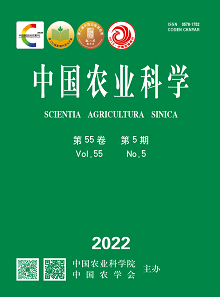【Objective】Make clear the input and ecological environment risk of maize production in Northwest China. 【Method】Based on the life cycle assessment (LCA) method, the inputs (fertilizer, pesticide, diesel, mulch, seed, and labor) and ecological environment risks (greenhouse gas emissions, soil acidification, water eutrophication and human toxicity) of maize production in six provinces (Xinjiang, Shaanxi, Shanxi, Ningxia, Inner Mongolia, Gansu) of Northwest China during the past 15 years (2004-2018) were evaluated, and the inputs, ecological environmental risks and spatiotemporal variations of maize production per unit area (per hectare) in those resources were quantitatively evaluated. 【Result】 Inputs and ecological environment risks of maize production were high in Northwest China. The average fertilizer input in past 15 years was 233.1 kg N·hm-2, 106.3 kg P2O5·hm-2, 23.3 kg K2O·hm-2, while the pesticide, diesel, mulch, seed and labor inputs were 6.5 kg·hm-2, 93.2 L·hm-2, 13.7 kg·hm-2, 38.8 kg·hm-2 and 120.1 h·hm-2, respectively. The average maize yield was 7.9 t·hm-2. The averaged greenhouse gas emissions was 4 188 kg CO2-eq·hm-2, the soil acidification potential was 155.3 kg SO2-eq·hm-2, the water eutrophication 52.6 kg PO4-eq·hm-2, and the human toxicity was 2.9 kg 1, 4-DCB-eq·hm-2. Compared with the data in 2004, the overall input for maize production of Northwest China in 2018 was increased, showing an overall increased trend. The rates of nitrogen fertilizer, phosphorus fertilizer and potassium fertilizer per unit area increased by 9.2%, 52.7% and 203.7%, respectively; the rate of pesticide, diesel oil and mulch per unit area increased by 303%, 143% and 108%, respectively. The rates of seed and labor per unit area decreased by 38.6% and 50.8%, respectively, while the planting area and maize yield increased by 79% and 26.9%, respectively. On the whole, the multiple ecological environment risks showed a first increased and then decreased trend, in which the greenhouse gas emissions, soil acidification potential, water eutrophication potential and human toxicity per unit area increased by 13.6%, 15.8%, 2.6% and 302.5%, respectively. Among the 15 years of maize production in Northwest China, the highest nitrogen fertilizer input and greenhouse gas emissions per unit area were observed in 2016, and the lowest were observed in 2007. The inputs and ecological environment risks of maize production in different provinces of Northwest China were significantly different. In terms of unit area, the rate of nitrogen fertilizer, mulch and labor input was the highest in Gansu, and the lowest in Shanxi, Shaanxi and Inner Mongolia, respectively. The rate of phosphorus fertilizer and diesel was the highest in Xinjiang, and the lowest was Shaanxi. The rate of potassium fertilizer was the highest in Shanxi and the lowest in Xinjiang. The rate of pesticides and seeds was the highest in Ningxia and Xinjiang, and the lowest in Shanxi. The planting area and maize grain yield were the highest in Inner Mongolia and Xinjiang, and the lowest in Ningxia and Shaanxi, respectively. Simultaneously, the greenhouse gas emission and soil acidification potential were the highest in Gansu, the water eutrophication potential was the highest in Shaanxi, and the human toxicity was the highest in Ningxia and the lowest in Shanxi. The comprehensive value of inputs and ecological environment risks for maize production in Northwest China was the highest in Ningxia. Shanxi achieved the lowest comprehensive value of ecological environment risks for maize production in Northwest China. 【Conclusion】The maize production in Northwest China was characterized by “high input, high yield and high risk”, while the inputs and ecological environment risk were quite different in different spatiotemporal scale. From 2004 to 2018, the planting area, grain yield, and inputs were totally increased slightly, while the ecological environment risk showed a first increased and then decreased trend. The maize production could be considered to incline to high-yield and low-environmental risk areas, and achieve high yields and low ecological environment risks in the future.









